The MiG-105 was a space plane that was originally earmarked to play a starring role in the Soviet’s aborted attempt to create an orbital launch system. The Spiral project was incredibly ambitious in scope, aiming to produce a manned orbital vehicle that could, via a three-stage process, transport men as well as cargo to the upper echelons of the earth’s atmosphere.
Although the project was doomed from the start because of the reluctance of the government to fund such a complex and multi-year affair, many of the experimental leftovers were put to good use as test beds, assisting in the development of programs that would go on to eclipse Spiral.
Background
At the start of the 1960s, the Soviet manufacturer Mikoyan commenced the Spiral combination aerospace system, with the goal being to create a reusable orbital flight vehicle by the middle of the 1970s.
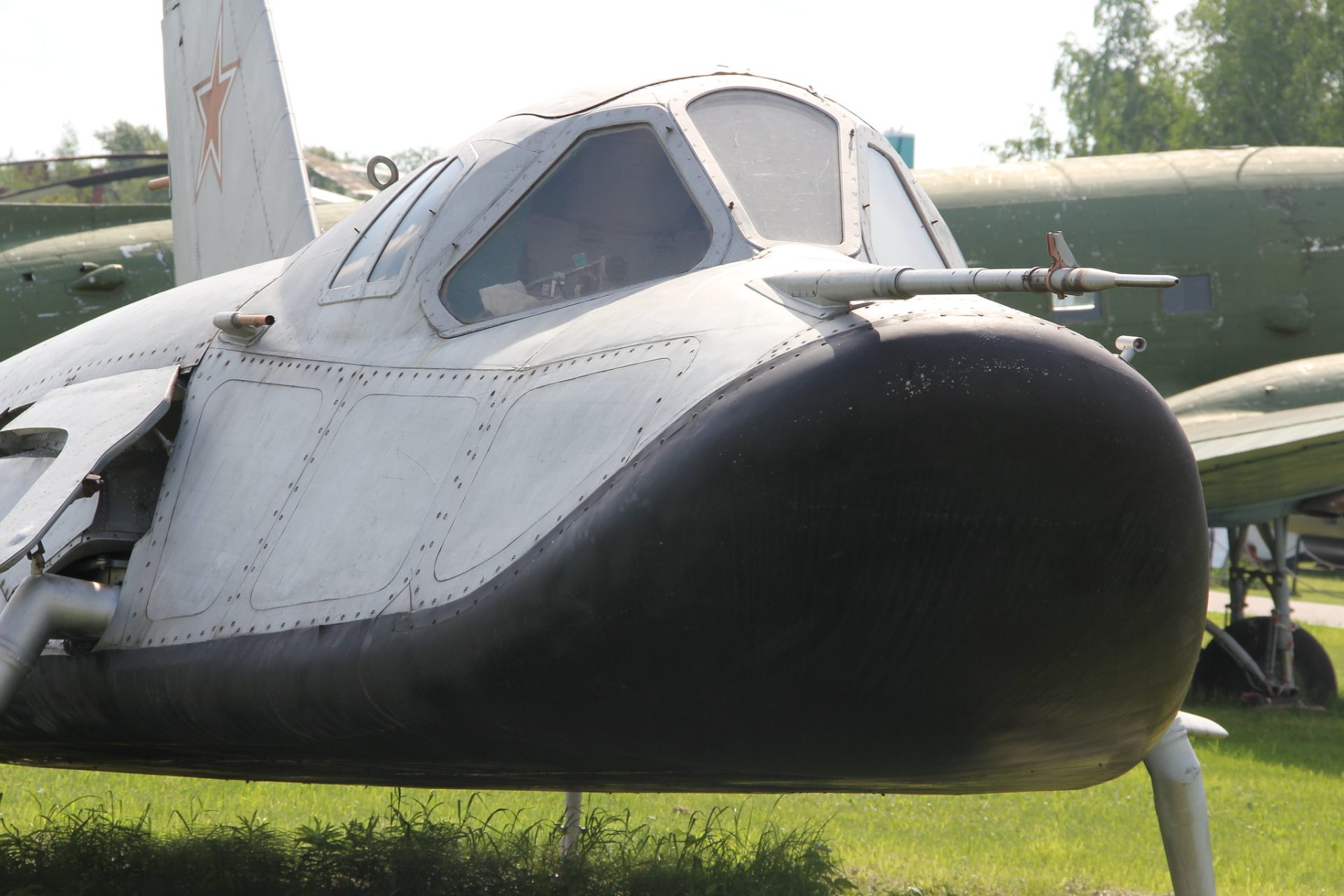
Anticipated to be able to transport a payload 2 to 3 times larger than any preexisting system, Spiral was also conceived with cost in mind, for if successful it could reduce the cost per kilogram of payload to orbit by 3 to 3.5 times less.
It would also be the most versatile craft of its kind because it was to be air-launched, meaning it could reach any orbital altitude and enter the lower boundaries of space even in bad weather conditions.
Following government approval of their plans in 1965, on June 26th 1966 with Lozino-Lozinsky as head engineer, the manned orbital vehicle was officially authorized, as was a cosmonaut training group in December 1967 composed of team members Beregovoy, Filipchenko, Kuklin and Shatalov, and led by seasoned Soviet astronaut Gherman Titov.
The Spiral System
In order for the Spiral project to be triumphant it required 3 components: a GSR reusable hypersonic air-breathing launch aircraft, an RB expendable two-stage rocket, and an OS – Orbital spaceplane.
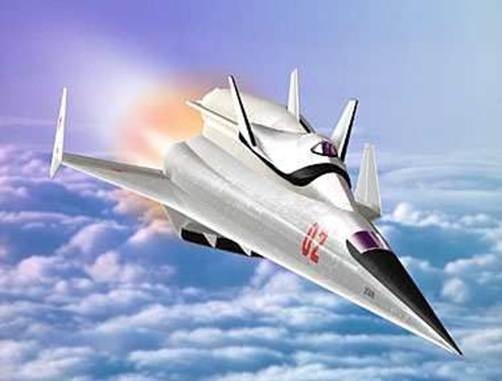
The GSR was to be propelled by 4 ramjet engines carrying up to 16,000 kilograms of fuel and was planned to have two variants. The first would be running on kerosene fuel and was to accelerate to Mach 4 at an altitude of between 22 to 24 kilometres before it released the RB and OS, upon which it would return to base. The faster second version would instead be fed with liquid hydrogen, and was forecasted to reach Mach 6 up to an altitude of between 28 to 30 kilometres.
The shape of the GSR resembled an arrow-shaped flying wing, which was to be fitted with vertical stabilizers on the wingtips, an engine bay with high bypass engine inlets under the fuselage, and a mounting station on top of the wing where the RB and OS would be attached and jettisoned.
In the next stage, the RB rocket would propel the OS space plane operated by the cosmonauts into orbit. Like the GSR, the RB was envisioned to either be powered by kerosene or liquid hydrogen.
The design of the OS vehicle was to be derived from an earlier orbital spaceplane, the Tsybin PKA, and would feature a flat-bottomed lifting body, a triangular planform, and a large upturned nose installed to specifically decrease afterbody heat during reentry, a component also adopted later by NASA in the 1980s for its failed HL-20 Personnel Launch System, and which also gave the OS the nickname ‘Lapot’ or ‘wooden shoe’.
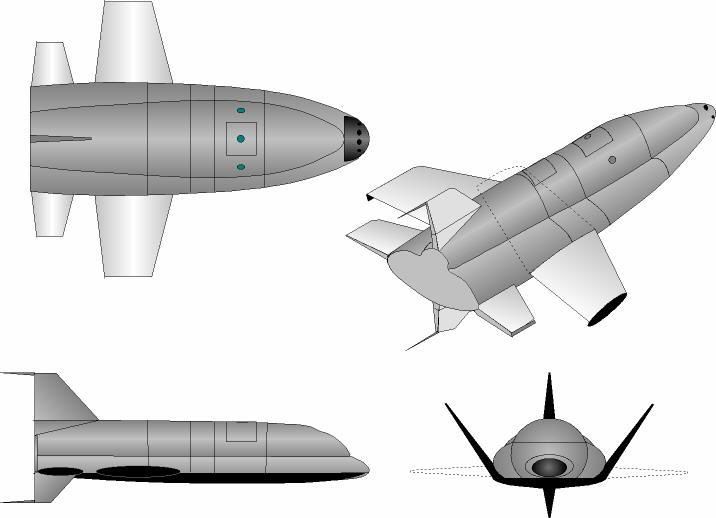
The OS was to be equipped with variable dihedral wings, which were to automatically turn to 60 degrees via electric actuators upon reaching subsonic speeds to increase lift. During launch and orbit, they would be used as wings, while in reentry they would instead act as vertical stabilisers. For further aerodynamic stability, the main body had a sweepback angle of 78 degrees, the wings 55 degrees, and the big vertical stabilizer 60 degrees. Pilots would fly the craft with a control array consisting of a vertical rudder, wing elevons, and an air brake situated on the top rear of the fuselage.
How did it work?
After being discharged from the GSR, the RB rocket would hurl the OS to an altitude of 130 kilometres, where it would only be able to perform 2 or 3 rotations before the onset of orbital decay.
Fed by fuel receptacles at the centre of the plane, at the orbital level the OS would be controlled primarily by an engine with a thrust of 1,500 kilograms or dual backup engines each with a thrust of 40 kilograms. The pilots were to maintain altitude using two reaction control systems pods located beside the backup engines and to manoeuvre with the assistance of 6 engines each with 16 kilograms of thrust, while an assembly of 10 engines each with 1 kilogram of thrust was only used for finer adjustments.
After completing its objective, the OS would return to the atmosphere at a high angle of attack with the wings rotated into a vertical position so that they were located within the shockwave stream of the fuselage. In order to protect against the extremities of reentry, the outer layer of the craft was permitted to thermally expand, while a light metallic shield safeguarded the joints and attachment points of the inner frame.
When velocity was sufficiently reduced, the wings would reorientate back into the horizontal configuration, giving it enough lift to perform a conventional landing at an airstrip. In case there was a problem, the OS was also installed with a Koliesov RD-36-35K turbojet with a thrust of 2,350 kg, which was supplied with 500 kilograms of kerosene, enabling it to cruise for 10 minutes at full thrust and giving it time to make another attempt to touch down.
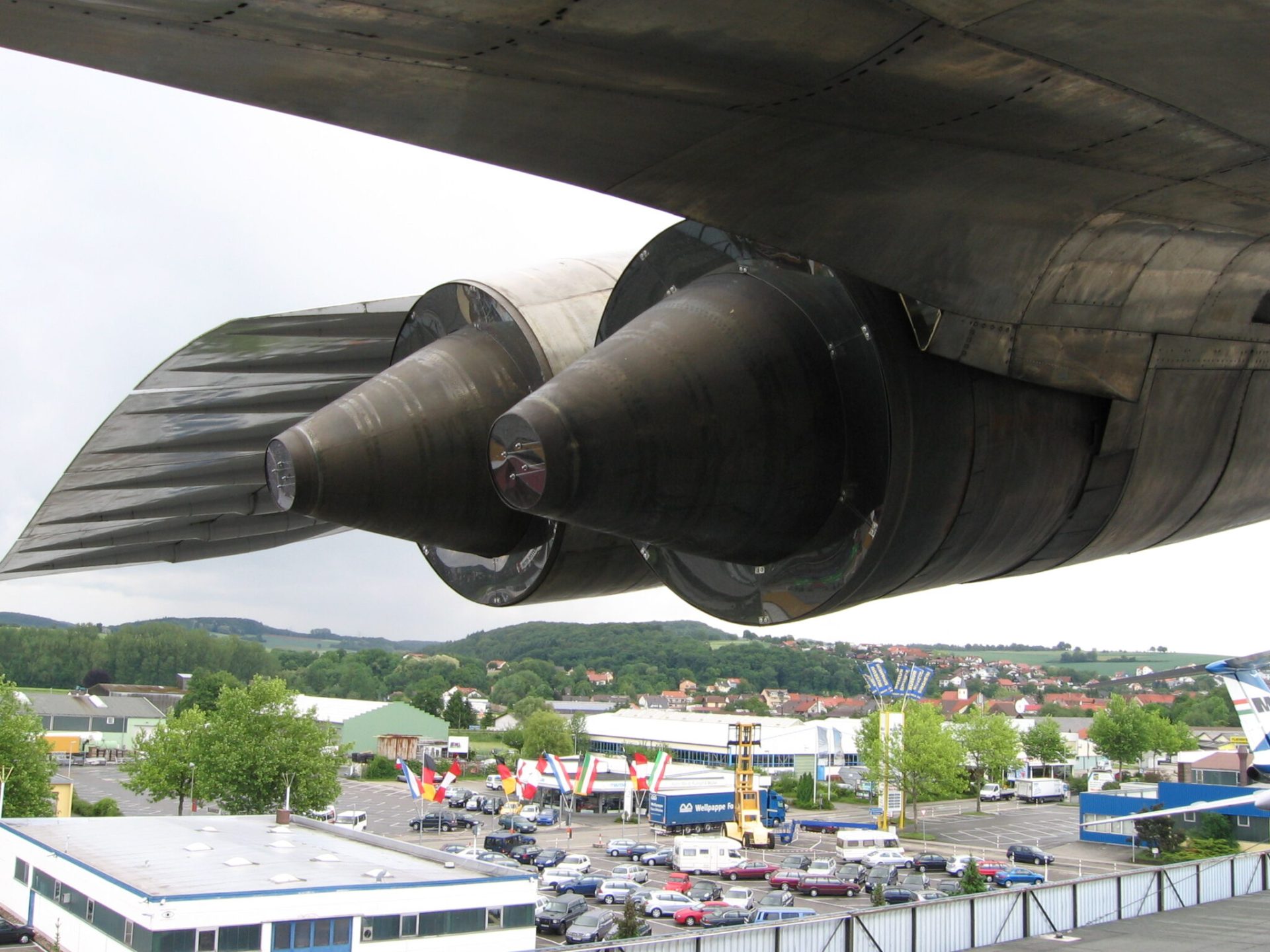
The dorsal intake at the foot of the stabilizer that fed this particular engine with fuel was concealed during the launch and orbital phases, and only opened with an actuator once the OS had reached subsonic velocities.
For emergencies, the pilot was ensconced in a highly advanced and insulated escape capsule installed with its own navigation system, braking rockets, and parachutes, which could even be activated while in orbit, and could be controlled using rudder pedals, jet engines, and rocket engines.
Development and Testing
A total of 3 OS spaceplanes codenamed 105-11, 105-12, and 105-13 were constructed, with each being considerably smaller so that they could be fitted onto a Soyuz launch vehicle for initial evaluations.
Despite early suggestions that the OS prototype could be towed into orbit by the launch vehicle and placed in its exhaust, it was eventually decided that the OS was to sit more conventionally atop the Soyuz rocket. Conversely, for reentry testing, the OS prototypes were to be hurled mid-air by a Tu-95 bomber at either subsonic speeds or between Mach 6 and Mach 8.
Before its planned foray into space, the aerodynamic qualities of the OS were first assessed in a series of wind tunnel tests, while later its hypersonic aerodynamic characteristics and heat resistant materials were examined using 1:3 and 1:2 scale models given the moniker BOR, or ‘unpiloted orbital rocketplane’.
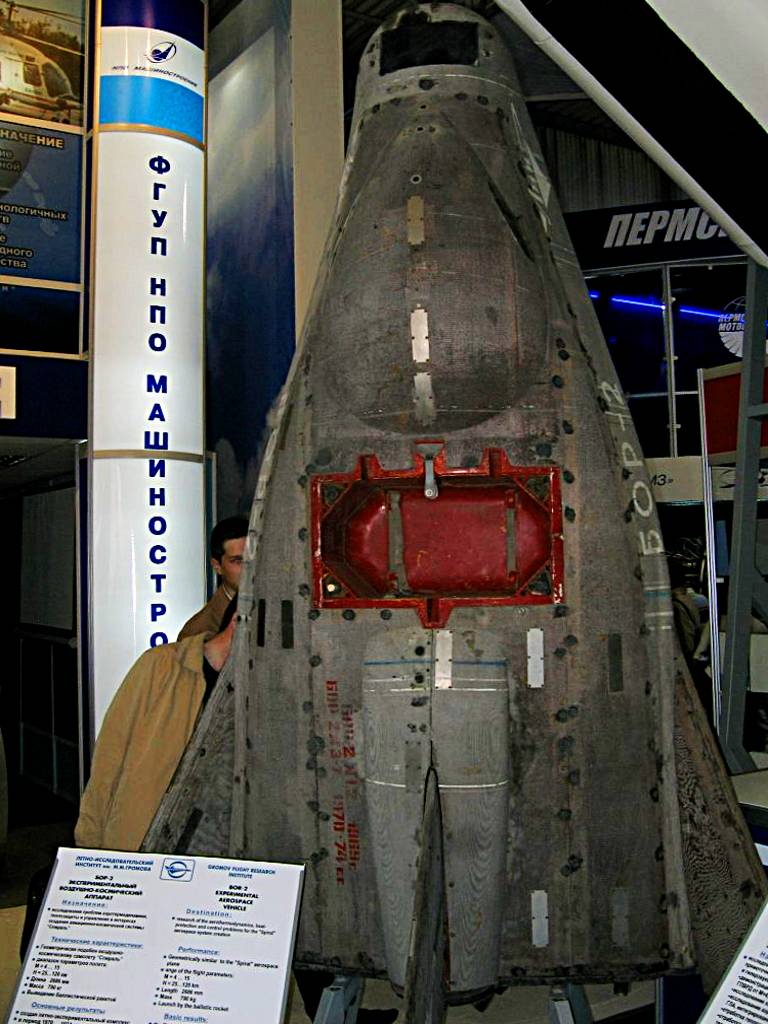
A lack of funds or interest from the Soviet hierarchy however delayed the project significantly, and by July 1970 the most senior cosmonaut Gherman Titov had left. Despite this alarming development and the death of MiG co-founder Artyom Mikoyan later that year on December 6th 1970, the program limped on for a further 3 years before the cosmonaut group was finally disbanded in December 1973.
EPOS and the MiG-105
The project however was not completely shelved and was re-designated as EPOS or Experimental Piloted Orbital Aircraft. On the other hand, instead of testing a complex orbital launch system, EPOS was to simplify the investigative aims dramatically by conducting the easier task of assessing the analogue systems built into one of the subsonic OS prototypes, the 105-11, from February 1976.
Renamed the MiG-105, the experimental craft first took to the skies from a Moscow runway on October 11th 1976 without incident, and was able to fly in a straight line at an altitude of 560 meters before touching down at the Zhukovskii flight test centre located 19 kilometres away.
After being dropped from a Tu-95 bomber from a height of 5,000 meters on November 27th 1977, the MiG-105 would undergo its last flight in September 1978 accompanied by a MiG-23, where test pilot V. Uryadov was to make a lucky escape.
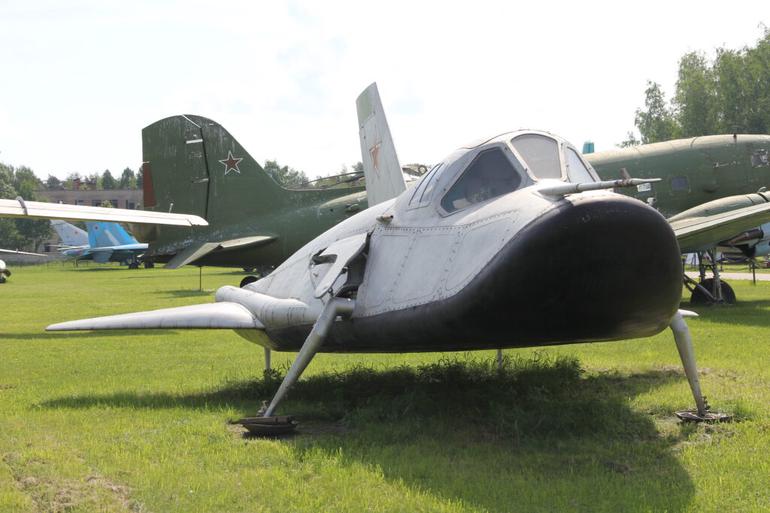
Coming into land and with a strong sunset diminishing visibility, flight control officer and celebrated Hero of the Soviet Union major-general Vadim Petrov mistook Uryadov’s MiG-105 for the MiG-23. Instructing the MiG-105 to touch down, Uryadov noticed too late that he was approaching the right of the runway and quickly reacted by making a sharp left turn. Thanks to Uryadov’s swift intervention the MiG-105 reached the edge of the strip, making a hard landing and taking only minor damage.
Despite a hair-raising finale, the EPOS program was lauded as a success. With the subsonic characteristics of the MiG-105 considered fully mapped out, the craft was then retired to the Central Air Force Museum in Monino, near Moscow, where it can still be seen today.
Interestingly, at the same time as the OS 105-11 was being repurposed as the MiG-105, the scaled-down OS models known as BOR, employed briefly in wind-tunnel tests, were being used to develop heat shield materials for the Buran spaceplane, which would rival the American Space Shuttle program for much of the latter half of the 20th century.
Specifications
- Crew: 1
- Length: 10.6 m (34 ft 9 in) (including instrument boom)
- Wingspan: 6.7 m (22 ft 0 in)
- Wing area: 24 m2 (260 sq ft)
- Empty weight: 3,500 kg (7,716 lb)
- Gross weight: 4,220 kg (9,304 lb)
- Fuel capacity: 500 kg (1,100 lb)
- Powerplant: 1 × RD-36-35K turbojet, 19.61 kN (4,410 lbf) thrust
- Maximum speed: 800 km/h (500 mph, 430 kn)










